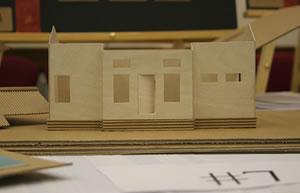- 22 reads

There has been a lot of talk recently of building sustainably, but not much has been said about what that means. Utilizing sustainable building technologies means creating a safer work environment by using less chemicals, but it also means paying less of utility bills and making do with the supplies which are not at threat of being depleted. There is stuff to build with and stuff that you may want to put in your house, and almost all of it can now be made of recycled and/or sustainably produced materials.
- Recycled Construction Waste – The stuff is gathered onsite and put in into separate bins, dumpsters and collectors. Most things that are discarded can be used again, including wood scraps, vinyl siding scraps, concrete, stone, tubing, metal, sheathing and more.
- Wood – Wood can not be treated with any chemicals if it is used in a sustainable project because those chemicals could harm the air quality of the building. Wood should also be reclaimed and/or sustainable stock, which means the trees it is derived from are not in danger of being over harvested. Wood flooring is being slowly replaced by cork and bamboo, which are much better at renewing themselves naturally than trees.
- Hardy Board Siding – Cement and recycled fibers are a product of this type of siding. There are versions of siding on the way that are 100% recycled, but those are not ready yet.
- Insulation – Insulation in sustainably built properties can be made of a lot of different products that will not add unwanted chemicals to your walls. The materials now being used in insulation include, but are not limited to, cloths, jeans, rags, newspapers and many more materials that have outlived their usefulness as clothing.
- Low VOC Paints – Paints with Volatile Organic Compounds (VOC) are dangerous, because they include chemicals whose compounds don’t really agree with one another. Paints with low- or no VOC’s are much healthier for the people inside, as they will not have to breathe in the chemicals. This holds for organic rugs and furniture as well, as those products have seem a proliferation of chemical byproducts and glue in their construction over recent years.
- Rain Barrel – These collect and redistribute water according to your needs and can help build up a host of native plants. These are also more efficient at watering the lawn, or keeping a roof garden or a smart roof fertile and responsive.
- Geothermal Energy – Closed loop geothermal heat pumps offer heat to your home or office while slowing the whirring of your energy meter. These HVAC systems are very efficient and gain heat from the earth underground in order to heat your property. Go for the wells type over a ground loop where possible.
- Passive Solar System with a Tankless Water Heater – This combination will greatly reduce the utilities for any space, as the passive solar energy system relies on the properties of heat movement to spread the warmth around. With the addition of a tankless water heater, it becomes very easy to cut both electricity and water bills.
- EnergyStar Appliances – These products have been tested by the government, and are assured to save energy and money over the competing non-green appliances. They may cost a little more, but will end up saving the purchaser money in not too long a time.
- Compact Fluorescent Lamps and Light Emitting Diodes – Both of these are better options for light bulbs than the traditional incandescent bulb. CFL’s last about 10 times longer than incandescents and use less energy all the while. They even come in dimmable versions. LED’s are even better, as they are estimated to last about 10 times longer than CFL’s. They are much more expensive, however, and are not as readily purchasable in the market. Technologies are improving, and these products could be available very soon.
- Solar Photovoltaics – Solar panels are a great way to save energy, and can heat and power a lot of different things in the office. The problem is that they are expensive, and for a sizeable office, the need will be for many, many panels facing in the right direction. Energy consumption will be cut if this system is implemented properly.
- Miscellaneous - Bamboo or Cork Floors are better options than wood as they are Rapidly Renewable resources, with bamboo growing at about 60 feet every year. Low-e double paned glass will cut energy loss through windows, but so will caulking and weatherstripping, as they will all decrease the flow of war or cold air out of the building.
These are just to name a few of the items and ideas that will become, and actually are becoming, commonplace in our homes and in the manufacture of new homes and buildings. Even within these categories, there are a lot of different ways to go. IT is important to do your research if you are deciding on making an upgrade to your home or business.
GREENandSAVE.com is a free resource for anyone that wants to save energy, money, and the environment. The articles, product reviews, online tools, and return on investment calculations are researched from a diverse range of public and private sector sources. Overall, the company is passionate about saving money as well as creating healthy homes, offices, and lifestyles.
For more information, check out GREENandSAVE.com for some great Home Remodeling Tips. Or, for an idea on how to most efficiently spend your money, take a look at the Return on Investment Table for Home Remodeling projects.

